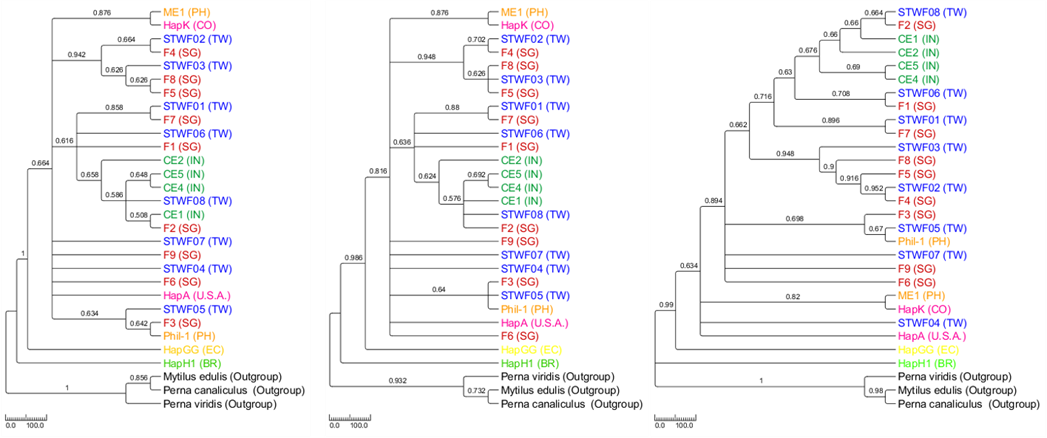SDG14.3.4 Technologies used to prevent aquatic ecosystem damage (direct work)-2021
NCUE has ongoing projects and activities, which include the ‘Fangyuan Reconstruction USR Seed Type Project’ by the Environmental Education Centre, and the ‘2020–2022 Delve into Fangyuan, Hand in Hand with Dacheng: Industrial and Environmental Sustainability in Twin Cities of Changhua’ project. The following is a brief description.
‘Fangyuan Reconstruction USR Seed Type Project’ and ‘Early-Stage 2020–2022 Delve into Fangyuan, Hand in Hand with Dacheng: Industrial and Environmental Sustainability in Twin Cities of Changhua Project’
Research projects: 1. The potential distribution of new exotic species Mytella charruana in Taiwan. 2. Determining the origin and colonisation process of the invasive mussel Mytella strigata from its genetic structure.
Mytella charruana (d'Orbigny, 1842) has recently become a new invasive species in Asia. After entering the coasts of Taiwan, it has spread along the coast, causing changes in both the native coastal species and their food-related ecosystems and biodiversity. Moreover, it hinders the survival of native species or farmed clams, and some even wrap the clams in solid blocks, thus causing their death. According to estimates, it has caused a loss of 30%–70% in the mariculture yield. Furthermore, it uses byssus to adhere to the substrate and has strong reproductive power and high growth density. It attaches to machinery, ditches, water pipelines, ship hulls, and organisms and is the main culprit behind ecological and economic crises in many countries.
Project 1: Estimate the current spread rate of this species along the coasts of Taiwan and its possible distribution in nature, and predict its possible spread rate and affected area in the future to assess its impact on Taiwan’s coastal biodiversity and coastal clam mariculture.
 The location and density of the invasive mussel Mytella strigata (Hanley, 1843) along the coasts of Taiwan. The current data collection covers a total of 78 sample points in 16 counties and cities. The circles represent the coastal sample points, and the squares represent the farming pond sample points. |
|---|
Project 2: Infer the source of the Mytella strigata invasion in Taiwan by analysing its genetic mutation and genetic relationship of the mitochondrial DNA COI sequence. Furthermore, it includes the investigation of its coastal distribution and other environmental factors to explore possible ways of its proliferation in Taiwan and the relationship with human activities.
 Based on the establishment of kinship and literature review, it is inferred that the Mytella strigata may have invaded Taiwan from the Philippines or Singapore via ocean shipping or ocean currents. Its place of origin is Colombia. |
|---|
Link to the FB page of the projects https://www.facebook.com/NCUEUSR/

